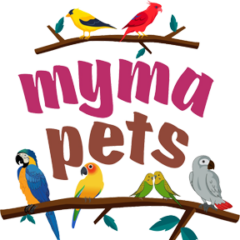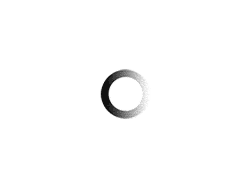Description
ROSE BREASTED COCKATOO (GALAH COCKATOO)
Origin and History
The galah is native to Australia, where it can be found in open grasslands and over much of the country. It has self-established in Tasmania. Galah cockatoos travel in large flocks, often in groups that also include sulfur-crested cockatoos. They will mate with other species of cockatoos.
Galahs are a familiar sight in urban areas. These birds tend to be more prevalent in settled areas because they eat cultivated crops and make use of artificial ponds and livestock watering troughs. Many farmers regard the birds as pests.
The name “galah” means “fool” or “clown” in the native Australian language. This highly intelligent bird got the name for being a loud nuisance. The term “galah” is a slang, derogatory word in Australia that means a “loud-mouthed idiot.”
Temperament
Affectionate and friendly, the galah cockatoo has a reputation for being a loving pet. Unlike umbrella cockatoos, these birds are not big on cuddling. But they are accustomed to handling.
If you are interested in owning a galah, make sure that you have plenty of free time to spend with your pet. It is a sensitive bird, requiring a lot of attention and interaction from its owners. As a flock-dwelling bird by nature, if its adopted human flock mate ignores it, the rose-breasted cockatoo can become depressed, angry, and destructive.
Speech and Vocalizations
Wild galahs emit loud, high-pitched sounds while flying in flocks. They can make a resonating screech when frightened, excited, or calling out for attention. This clever bird can imitate people’s voices and repetitive sounds like train whistles, car horns, or telephone ringtones. Some say males are more prolific talkers than females.
Comparatively, the galah cockatoo is not particularly loud for a cockatoo, which is among the loudest of parrots. Still, this bird is not recommended for apartment or condo living. It usually has two noisy periods, once upon waking with the sun and at dusk.
Galah Cockatoo Colors and Markings
Their bold colors and friendly personalities have made galah cockatoos increasingly popular as pets. As its descriptive name suggests, rose-breasted cockatoos have bright pink feathers on their chests, bellies, and the lower half of their faces. They have pinkish-white crests and Gray backs, wings, and tail feathers, Gray feet, and horn-colored beaks. As is true of all cockatoos, the galah has a head crest that fans out when the bird is frightened or excited.
The easiest way to attempt to determine the sex of a galah is to look at its eyes. Males have a darker, almost brown iris (area of the eye that surrounds the pupil) while the females have a lighter, pink iris. Anecdotally, males may talk more, and females tend to sit on a perch with their legs farther apart.
Caring for a Galah Cockatoo
Your bird will want to spend a considerable amount of time with you and will be a reasonably high-maintenance pet. If you are short on time for interaction, this bird might be happier housed with another galah.
These parrots need sound sleep in a dark, quiet place that mimics the safety of the roosting areas that they prefer when living in the wild. Covering the bird’s cage at night usually reassures them.
This bird is not a large parrot but still requires plenty of space. At the very least, it needs a 4-foot-square cage.
Common Health Problems
Galahs seem to be less prone to avian diseases than other cockatoos. However, they are just as susceptible to nutritional disorders as other parrots and cockatoos. Some of the most common conditions include fatty liver disease, lipomas (fatty tumors), psittacine beak and feather disease (PBFD), feather-picking, and other forms of self-mutilation (if they feel neglected).
By far, the most common problem with galah cockatoos is obesity. This is nearly always caused by too little activity, combined with a diet that has too many calories. With sufficient exercise and a balanced diet, your galah should remain at a healthy weight.
Diet and Nutrition
In the wild, galahs eat grasses, leaf buds, flowers, seeds, and on occasion, insects for extra protein.
When kept as pets, feed galahs a balanced diet. High-quality formulated pellets have been developed to meet all your bird’s nutritional needs. At least 50 percent of your bird’s diet should be in pellet form. The other half of their diet should be fruits and vegetables. Start by feeding 1/4 cup of pellets and 1/4 cup of fresh salad daily. Incrementally increase as needed.
Great choices for fresh vegetables include leafy greens such as Swiss chard, kale, Chinese cabbage, and romaine; root vegetables; peppers; zucchini; green beans; and sprouts. They love most fruits and berries. Give walnuts, almonds, and pecans sparingly as training treats. Fresh water should be available at all times.
Exercise
Galah cockatoos are active birds, and they need plenty of exercise to maintain their physical health. Pan on giving this bird at least three to four hours of active time outside of the cage each day.
Cockatoos have strong beaks and jaws, so it’s essential to provide plenty of safe toys made of wood or leather that allows them to exercise their jaw muscles and satisfy the natural chewing instinct.
Toys are an important part of enrichment for these birds. Change out the toys regularly to keep the birds interested and to encourage independent play.
Pros
• Can be taught to speak
• Can learn tricks
• Smaller-sized, requires smaller cage size than other cockatoos
• Less prone to avian diseases
Cons
• Can be noisy, not well-suited for apartments
• Requires at least 3 to 4 hours of supervised out-of-cage time
• Emits a powdery down that can aggravate allergies




